Overview
Museum technologies represent a significant advancement in the realm of cultural institutions, incorporating a variety of digital tools, notably augmented reality (AR) and virtual reality (VR). These technologies are meticulously designed to enhance visitor experiences and engagement. Research indicates that immersive environments created through AR and VR not only captivate audiences but also substantially elevate engagement and comprehension levels. For instance, AR applications have been shown to boost attendee interaction by as much as 80%. This exemplifies the transformative impact these technologies have on how museums connect with their visitors, underscoring the imperative for cultural institutions to adopt these innovative solutions.
Introduction
Museum technologies are revolutionizing the way audiences engage with culture, seamlessly merging the physical and digital realms to forge interactive and captivating environments. As museums increasingly leverage tools such as augmented reality, virtual reality, and mobile applications, they not only amplify visitor engagement but also transform the educational potential of cultural institutions.
However, with the rapid proliferation of these innovations, a critical question emerges: how can museums guarantee that these technologies remain accessible and meaningful for all visitors, irrespective of their backgrounds or abilities?
Define Museum Technologies
Museum technologies include a diverse array of digital tools and systems designed to elevate guest experiences, streamline operations, and protect cultural artifacts. Notable museum technologies include:
- Interactive displays
- Augmented reality (AR)
- Virtual reality (VR)
- Mobile applications
- Digital kiosks
Each contributes to the creation of immersive environments that captivate museum-goers. For instance, AR applications significantly enhance guest interaction by overlaying digital information onto physical exhibits, resulting in an impressive increase in engagement and information retention. Research indicates that AR can boost attendee engagement by as much as 80%, positioning it as a formidable asset for museums striving to attract and retain audiences.
The integration of museum technologies revolutionizes traditional exhibits into captivating encounters. A prime example is the Louvre's VR app 'Mona Lisa: Beyond the Glass,' which allows guests to interact with the iconic painting in a virtual setting, deepening their understanding and appreciation of the artwork. Similarly, the Smithsonian Institution's AR app 'Skin and Bones' animates fossils, enriching on-site learning and igniting public curiosity.
At the forefront of this technological evolution is Magic Playbox, pioneering immersive AR and XR experiences that not only heighten visitor engagement but also cultivate brand loyalty. By leveraging these cutting-edge innovations, museum technologies enable museums to craft interactive tour guides and virtual exhibitions that resonate with tech-savvy audiences, ultimately creating new revenue streams. Expert insights underscore the importance of meticulous design in implementing these advancements. Although AR can generate excitement, it must be complemented by substantial content to maintain engagement. The future of cultural institutions is poised to be shaped by these engaging innovations, which not only enhance guest experiences but also open new avenues for brands to connect with their audiences.
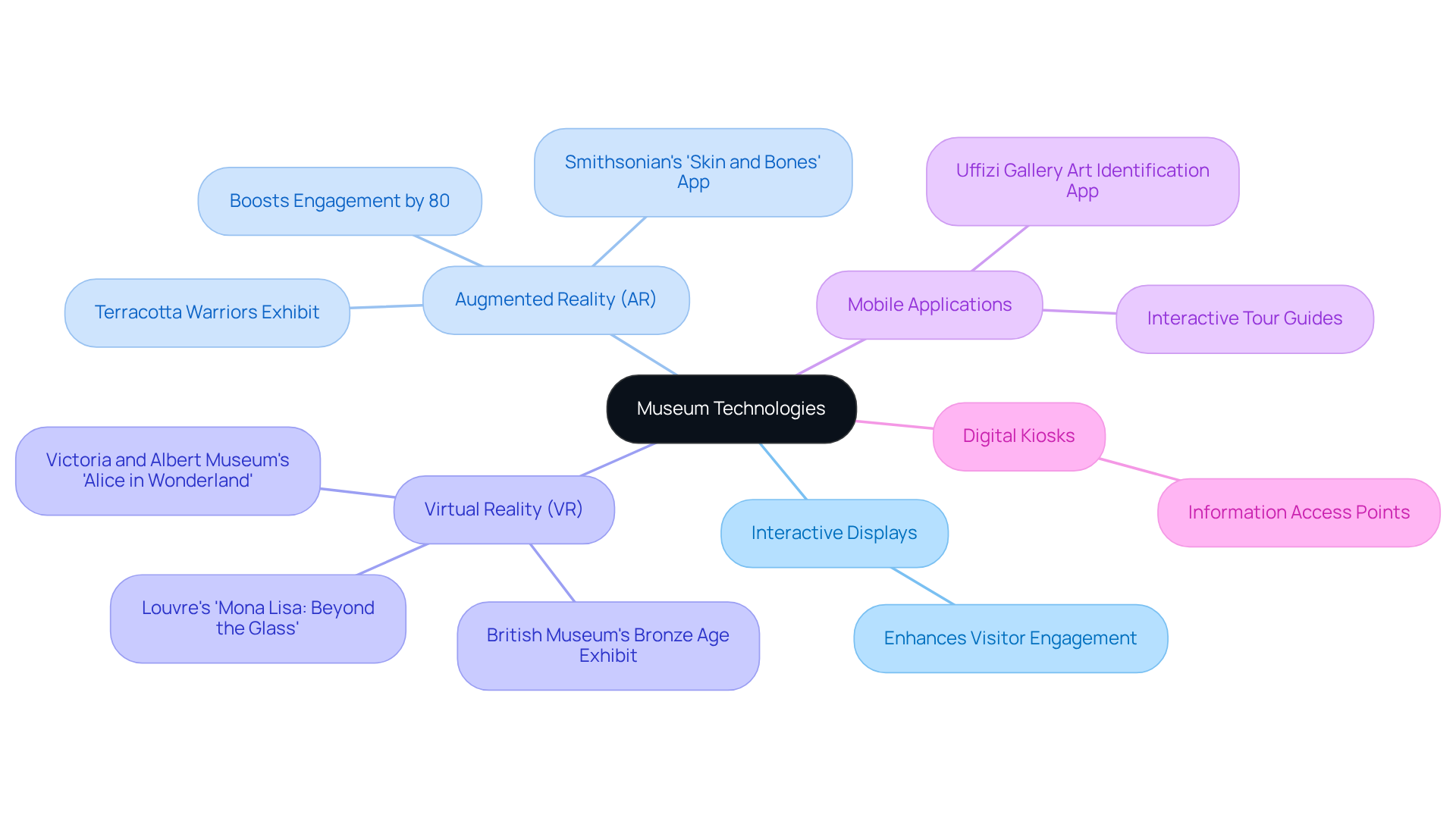
Explore the Evolution of Museum Technologies
The evolution of museum technologies can be traced back to the 18th century, marked by the establishment of the first public galleries that primarily utilized physical displays and printed materials for information dissemination. However, the late 20th century heralded a significant transformation as galleries began to incorporate museum technologies, such as audio guides and video displays, which notably enhanced guest involvement. The advent of the internet further revolutionized the offerings of cultural institutions, facilitating virtual tours and online collections that broadened access to cultural heritage.
By 2025, it is projected that approximately 70% of galleries will be employing museum technologies to enhance guest interactions, reflecting a growing trend towards interactivity and customization. Cutting-edge advancements in museum technologies, such as augmented reality (AR) and virtual reality (VR), are at the forefront, empowering galleries to craft fully immersive experiences that captivate audiences. A recent case study on augmented reality in exhibit displays revealed a marked increase in attendee comprehension and engagement, achieved by integrating real exhibits with virtual content.
Moreover, the integration of museum technologies, including AI, has enabled institutions to elevate attendee experiences through personalized interactions and tailored content. A mobile application designed for guest interaction has effectively boosted engagement by providing access to exhibition information and guided tours, fostering a continuous cultural dialogue even after guests leave the venue. This evolution highlights the critical importance of adopting advanced digital tools and museum technologies to enhance educational efficacy and visitor satisfaction in modern cultural institutions. Notably, companies like Magic Playbox are at the forefront of these immersive AR and XR experiences, significantly contributing to the advancement of exhibition innovations while enhancing brand interaction and customer loyalty.
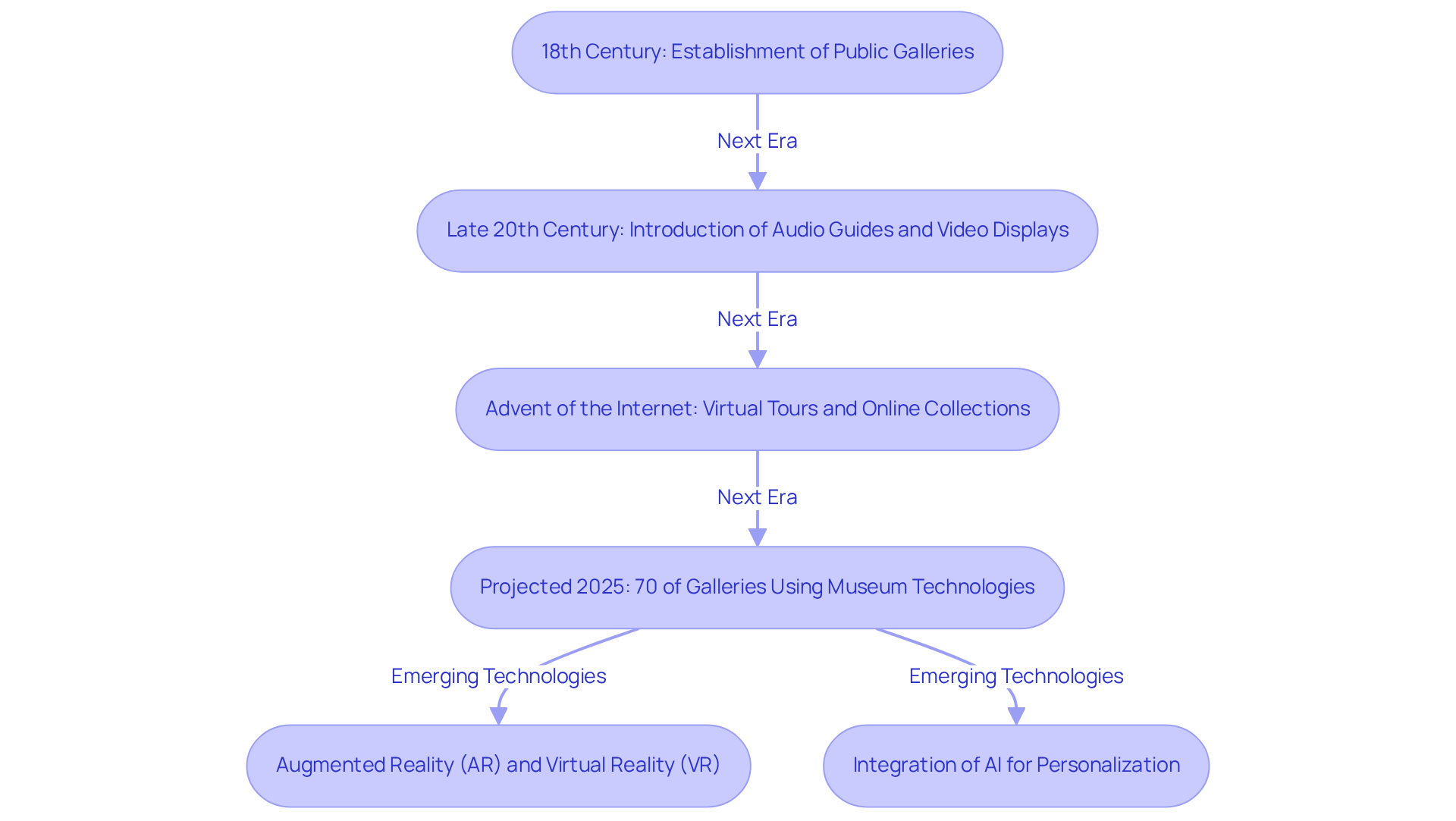
Identify Key Characteristics of Museum Technologies
Effective museum technologies are characterized by their interactivity, accessibility, and adaptability. Interactivity is paramount, as it allows individuals to engage with exhibits in a hands-on manner, fostering a deeper understanding of the content. Research indicates that 70% of visually impaired participants would visit galleries more frequently if they had full access to offerings and amenities, underscoring the necessity for engaging interactions that cater to diverse audiences.
Accessibility ensures that all guests, including individuals with disabilities, can fully enjoy the institution's offerings. Statistics reveal that 81% of visually impaired individuals believe museums do not provide content tailored to their needs, highlighting the critical importance of integrating accessible solutions. Mobile applications, for instance, can deliver audio descriptions and navigation aids, enhancing the exploration of exhibits for individuals with disabilities.
Adaptability refers to the capacity of technologies to evolve with changing visitor needs and technological advancements. Mobile applications can be updated with new content and features, while augmented reality (AR) interactions can be customized for specific exhibits or themes. This flexibility is essential for creating memorable and impactful experiences that resonate with a wide audience. By prioritizing interactivity and accessibility with museum technologies, cultural institutions can significantly enhance engagement and ensure inclusivity for all.
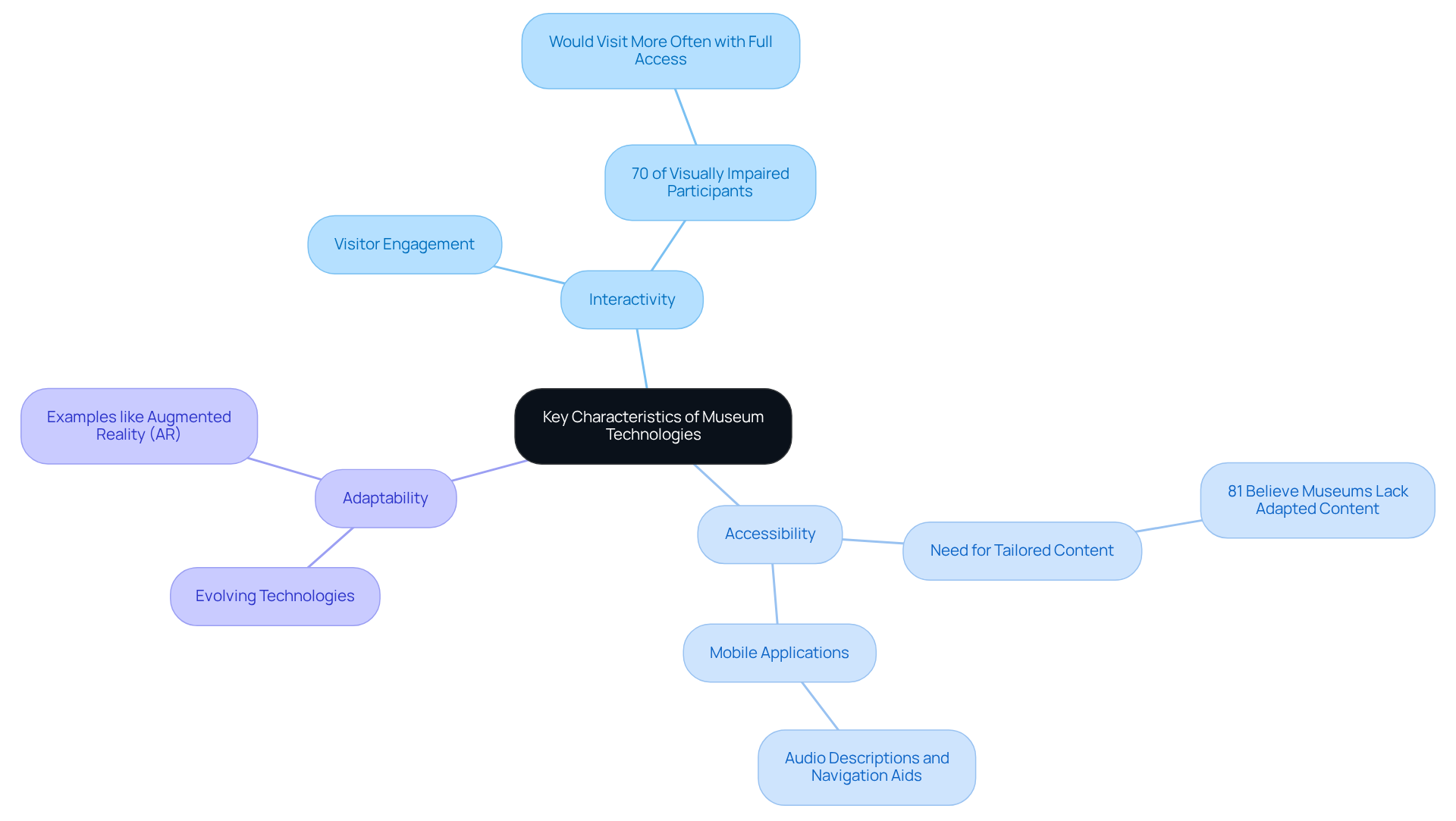
Examine the Impact on Visitor Engagement
The integration of museum technologies has significantly changed attendee engagement, especially through the innovative solutions offered by Magic Playbox. Their AR applications allow guests to interact with exhibits in real-time, delivering additional layers of information and context that significantly enhance the learning experience. Furthermore, Magic Playbox's virtual reality interactions transport users to historical events or locations, fostering a level of immersion unattainable by traditional exhibits. Data analysis from their digital tools empowers cultural institutions to better understand attendee behavior and preferences, enabling more tailored experiences. As a result, institutions that embrace these innovations often witness increased patron satisfaction, higher attendance figures, and improved educational outcomes. The impact of innovation on attendee involvement is substantial, reshaping how audiences engage with cultural heritage, and museum technologies such as Magic Playbox are at the forefront of this transformation.
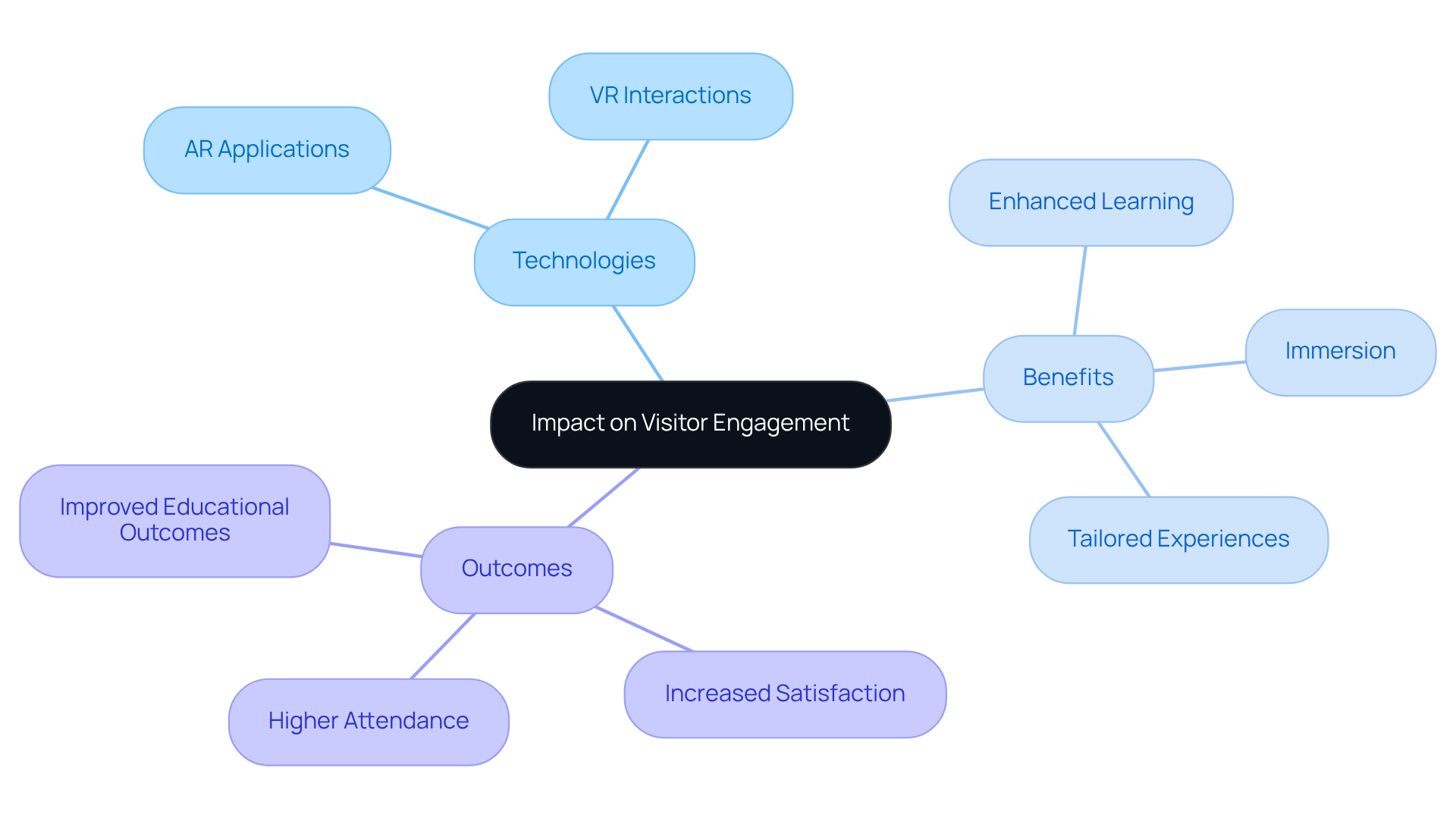
Future Trends in Museum Technologies
The future of museum technologies is set to undergo significant transformation driven by emerging trends. At the forefront is the integration of artificial intelligence (AI), which empowers museums to personalize guest experiences by customizing content and interactions based on individual preferences. This shift towards personalization is crucial, as research indicates that attendees engage four times longer with AI-enhanced exhibits compared to traditional displays. Furthermore, the Internet of Things (IoT) will facilitate the development of intelligent displays that respond dynamically to guest interactions, cultivating a more captivating and interactive environment.
As innovations in virtual and augmented reality continue to advance, cultural institutions are poised to harness these resources to craft immersive narratives that resonate deeply with audiences. A prime example is the Louvre's 'Mona Lisa: Beyond the Glass' virtual reality showcase, which demonstrates how innovation can elevate guest involvement by allowing interaction with lifelike representations of art. Additionally, companies like Magic Playbox are pioneering immersive AR and XR interactions that have the potential to revolutionize visits to cultural institutions, enhancing brand engagement and customer loyalty. These advancements indicate a future where museum technologies not only enrich the experience of visiting museums but also strengthen the connections between visitors and the cultural narratives presented, ultimately transforming how audiences perceive and engage with art and history.
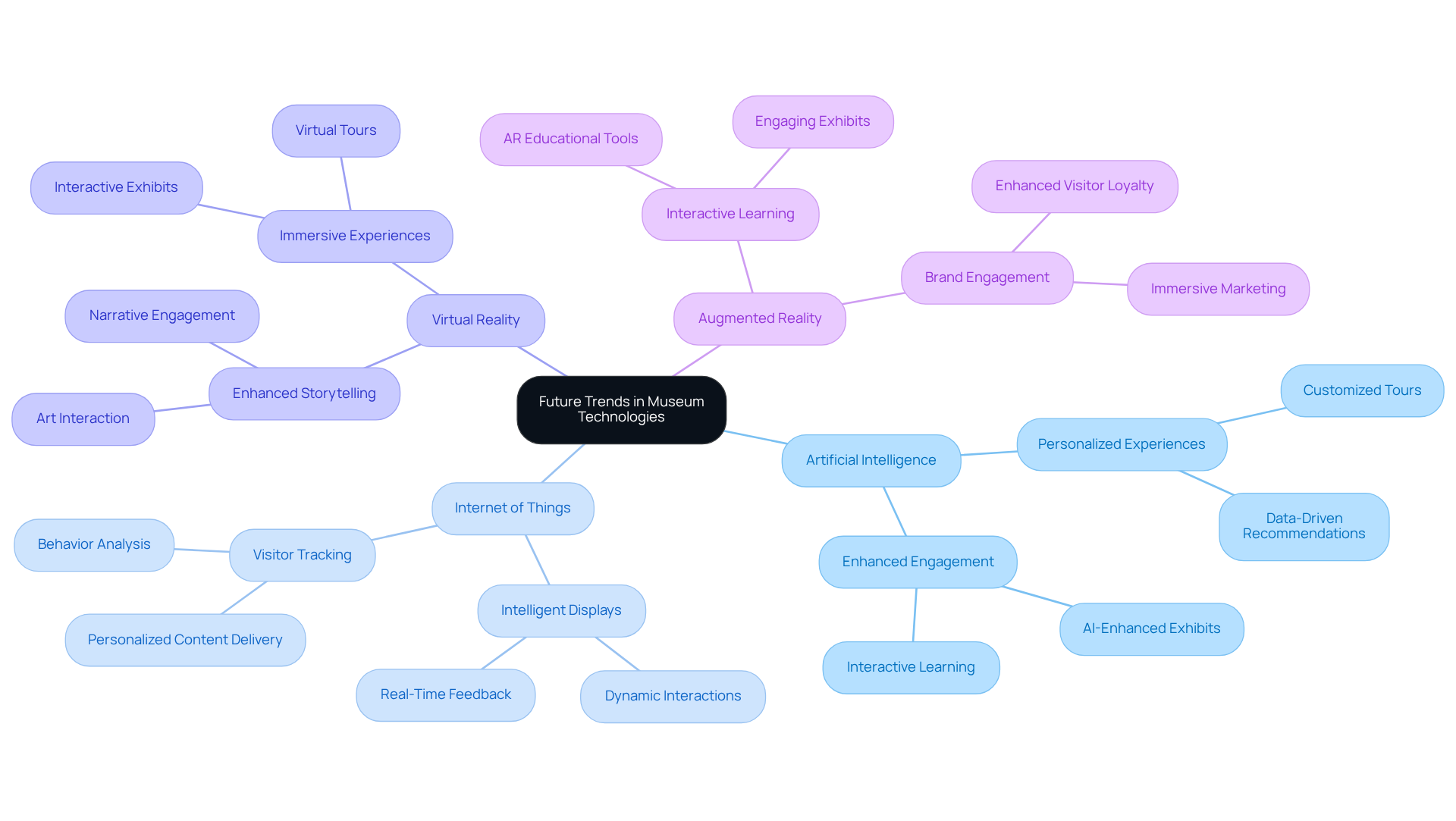
Conclusion
The transformative role of museum technologies in enhancing visitor experiences is undeniable. By integrating advanced digital tools such as augmented reality, virtual reality, and mobile applications, cultural institutions have redefined audience interactions with art and history. This evolution has shifted the focus from passive observation to active engagement, fostering deeper connections between visitors and exhibits.
Key insights from the discussion underscore the impressive capabilities of museum technologies to:
- Increase attendee engagement
- Improve accessibility
- Adapt to evolving visitor needs
Success stories from institutions like the Louvre and the Smithsonian illustrate how immersive experiences can enrich understanding and appreciation of cultural artifacts. Moreover, the emphasis on personalization through artificial intelligence and the Internet of Things signals a promising future where museums can tailor experiences to individual preferences, ensuring a more meaningful visit.
As museums continue to embrace these innovations, it is essential for cultural institutions to invest in technology that captivates and educates. The future of museum experiences lies in balancing technological advancement with thoughtful content design, creating an environment where every visitor, regardless of ability, can engage fully. The call to action is clear: museums must leverage these technologies to foster inclusivity, enhance educational outcomes, and ultimately transform how audiences perceive and connect with cultural heritage.
Frequently Asked Questions
What are museum technologies?
Museum technologies are digital tools and systems designed to enhance guest experiences, streamline operations, and protect cultural artifacts. Notable examples include interactive displays, augmented reality (AR), virtual reality (VR), mobile applications, and digital kiosks.
How do augmented reality (AR) applications benefit museums?
AR applications enhance guest interaction by overlaying digital information onto physical exhibits, resulting in increased engagement and information retention. Research shows AR can boost attendee engagement by as much as 80%.
Can you provide examples of museums using technology?
Yes, the Louvre's VR app 'Mona Lisa: Beyond the Glass' allows guests to interact with the painting in a virtual setting, while the Smithsonian Institution's AR app 'Skin and Bones' animates fossils, enriching learning experiences.
What is the significance of Magic Playbox in museum technologies?
Magic Playbox is a leader in creating immersive AR and XR experiences that enhance visitor engagement and cultivate brand loyalty, enabling museums to develop interactive tour guides and virtual exhibitions.
How has the evolution of museum technologies progressed over time?
The evolution began in the 18th century with physical displays and printed materials. The late 20th century saw the incorporation of audio guides and video displays, while the internet allowed for virtual tours and online collections. By 2025, it is projected that 70% of galleries will utilize museum technologies.
What role do AI and mobile applications play in modern museums?
AI and mobile applications enhance attendee experiences through personalized interactions and tailored content, providing access to exhibition information and guided tours, which fosters ongoing cultural engagement even after visits.
Why is meticulous design important in implementing museum technologies?
While technologies like AR can generate excitement, they require substantial content to maintain visitor engagement. Effective design ensures that these technologies enhance educational efficacy and visitor satisfaction.




